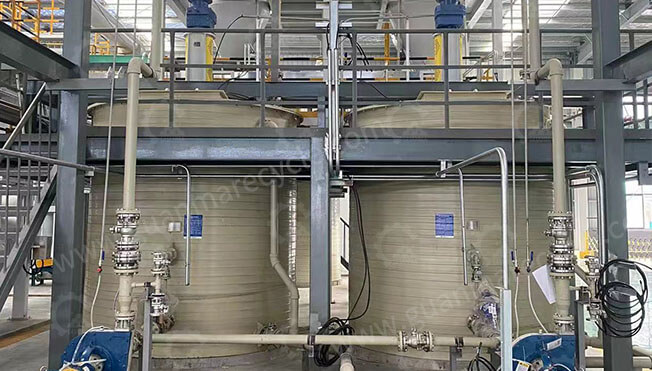As the demand for electric vehicles (EVs) and renewable energy storage continues to rise, the importance of efficient battery recycling has become increasingly evident. Ternary lithium batteries, which contain nickel, cobalt, and manganese (NCM), are a popular choice due to their high energy density and stability. However, the extraction of these valuable metals from spent batteries requires specialized equipment. In this guide, we will help you navigate the process of choosing the right ternary lithium battery extraction equipment, ensuring you make an informed decision that aligns with your business goals.
Understanding Ternary Lithium Batteries
Ternary lithium batteries, often referred to as NCM batteries, are a type of lithium-ion battery that uses a cathode material composed of nickel, cobalt, and manganese . These elements are crucial for the battery’s performance, offering a balance between energy density and safety. As these batteries reach the end of their lifecycle, extracting the valuable metals becomes essential for both economic and environmental reasons.
Key Considerations in Choosing Extraction Equipment
1. Technology and Efficiency
The first and most critical factor is the technology used in the extraction process. Advanced technologies such as hydrometallurgy, pyrometallurgy, and direct recycling methods can significantly impact the efficiency and yield of metal recovery. Hydrometallurgy, for instance, involves using chemical solutions to dissolve and separate the metals, while pyrometallurgy uses high temperatures to smelt and extract the metals. Direct recycling, on the other hand, focuses on reusing the battery components without breaking them down completely.

2. Capacity and Scalability
Consider the capacity of the equipment in relation to your current and future needs. If you are setting up a large-scale lithium-ion battery recycling plant, you will need equipment that can handle high volumes of batteries. Scalability is also important; ensure that the equipment can be upgraded or expanded as your business grows.
3. Cost and Return on Investment (ROI)
Battery recycling is a capital-intensive process, so the initial cost of the equipment is a significant consideration. However, it’s equally important to evaluate the long-term return on investment (ROI). High-quality equipment may have a higher upfront cost but can offer better efficiency, lower maintenance costs, and higher metal recovery rates, ultimately leading to greater profitability.
4. Environmental Impact
Sustainability is a key concern in the battery recycling industry. Look for equipment that minimizes environmental impact through energy efficiency, reduced emissions, and safe handling of hazardous materials. Some advanced systems incorporate features like closed-loop processes and zero-waste technologies to ensure minimal environmental footprint.
5. Compliance and Safety
Ensure that the equipment meets all relevant safety and regulatory standards. This includes compliance with local and international regulations regarding the handling and disposal of hazardous materials. Safety features such as automated shut-off mechanisms, fire suppression systems, and robust containment structures are essential to protect your workforce and the environment.
6. Supplier Reputation and Support
Choose a reputable supplier with a proven track record in the battery recycling industry. Look for suppliers who offer comprehensive after-sales support, including installation, training, and maintenance services. A reliable supplier can provide ongoing assistance and ensure that your equipment operates at optimal efficiency.

Step-by-Step Guide to Choosing the Right Equipment
1. Define Your Requirements
Start by clearly defining your business requirements. Determine the types and quantities of batteries you will be processing, the desired metal recovery rates, and any specific environmental or safety standards you need to meet.
2. Research and Compare
Conduct thorough research on different types of extraction equipment and suppliers. Compare their features, performance metrics, and customer reviews. Attend industry trade shows and conferences to stay updated on the latest advancements and innovations.
3. Request Quotations
Contact potential suppliers and request detailed quotations. Ensure that the quotes include all necessary components, such as the equipment, installation, training, and maintenance costs. This will help you make a fair comparison and avoid hidden expenses.
4. Evaluate Total Cost of Ownership (TCO)
Consider the total cost of ownership (TCO) over the equipment’s lifespan. This includes the initial purchase price, operating costs, maintenance expenses, and potential revenue from metal sales. Use this information to calculate the ROI and determine the best value for your investment.


